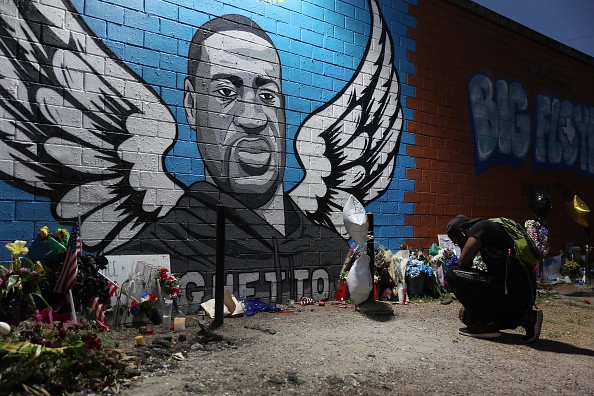Holocaust Museum in Florida Opens Exhibition About George Floyd

A Holocaust museum in Florida opened an exhibit about the death of George Floyd last week.
The exhibit was titled: "Uprooting Prejudice: Faces of Change."
According to Holocaust Memorial Research and Education Center in Maitland, Florida, where the exhibit can be found, it was opened "in the wake of George Floyd's murder."
In a report from The Blaze, it was said that the Holocaust museum "felt it was important to bring the meaning of the aftermath" of George Floyd's death to the public.
The photos were taken by photographer John Noltner, said a report from Washington Examiner.
The exhibit features 45 portraits that are dimly lit inside the exhibit and are displayed at eye level, as reported by Orlando Sentinel.
The museum's Facebook page said each black and white photo depicted people's "powerful emotions and thoughts in response to racism."
According to Noltner, he went to the intersection where Floyd died and asked people "What do you want to say?"
But the photographs don't just end with photos linked to Floyd's death. One of the portraits featured was that of Michael Brown Jr.'s Father. Brown was shot dead by a police officer in Missouri six years ago.
Floyd died while in police custody on May 25. Footage showed that ex-Minneapolis police officer Derek Chauvin was kneeling on Floyd's neck for over eight minutes.
Holocaust Memorial Research and Education Center in Maitland, Florida was founded in 1981 with the help of Holocaust survivor Tess Wise from Poland.
The Holocaust museum officially opened as the "first Holocaust museum in the Southeast" in 1986.
It was established to educate future generations about the extermination of six million Jews during the Second World War.
Looking Them in the Eye
Lisa Bachman, the assistant director of the Holocaust Center told Jewish News that the museum put up the exhibit so that "people can come and look these individuals in the eye."
The museum wanted to make the viewers of the exhibit experience the feelings that the people they featured were feeling.
Nolter also had the same kind of goal in mind when he took the photos.
He said when he discovered that Floyd was killed just about 11 miles north of his home, he had a goal of letting those "that aren't always heard as well as they should be" to be heard.
Bachman added that the goal of the exhibit wasn't for simple viewing but for those who visit it to feel it. She said the people photographed tell a story that has a "very universal message."
"It shows us we are not alone in our thinking," she added.
In a news release, Notler expressed hope that through his photographs, people can understand the events that led to Floyd's death in a new way.
"I hope you can challenge some of your own preconceptions and I hope you can see the humanity of each and every person," he said.
Floyd's death started protest after protest nationwide, all calling for justice and riots that was reportedly the "most expensive in insurance history." Insurance claims related to protest damages went up to about one to two billion.
Subscribe to Latin Post!
Sign up for our free newsletter for the Latest coverage!
© 2025 Latin Post. All rights reserved. Do not reproduce without permission.















